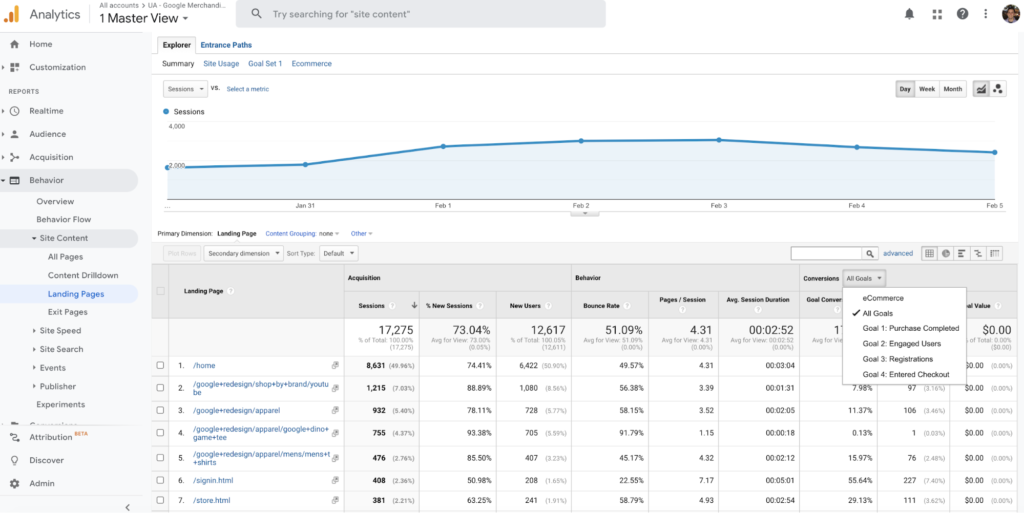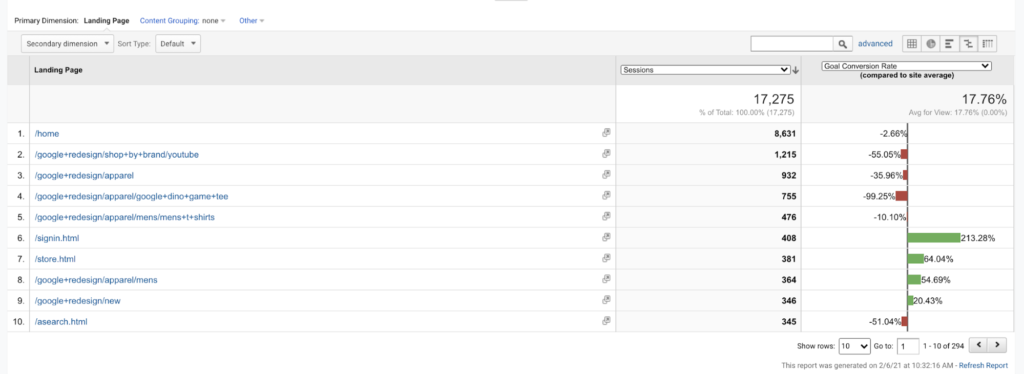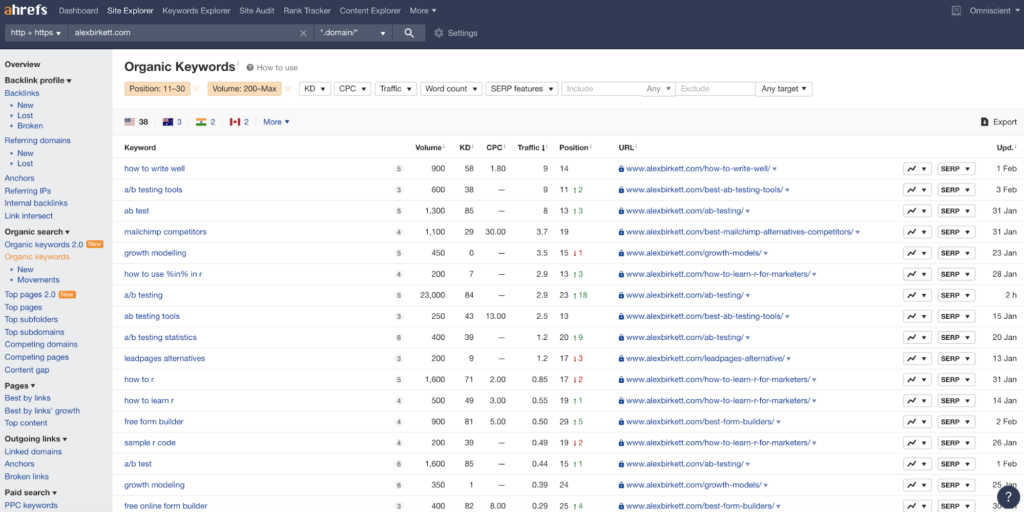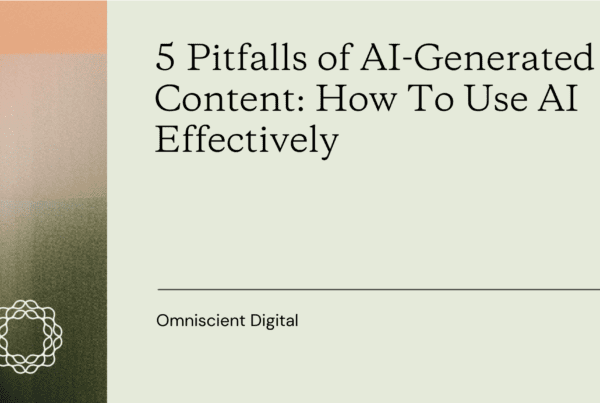
One of the most underutilized tools in a content marketing strategy is the content audit. But what exactly is a content audit and how do you conduct one? We unpack that here.
What is the ultimate goal of a content audit?
- Generate more traffic.
- Convert those readers into leads.
Typically, a content audit is performed in order to improve one or both of those goals.
Your aim is to analyze your current performance, diagnose areas of improvement, and establish a plan to correct and update historical content. You want to squeeze more value from the content you’ve already produced.
The content audit should be treated as part of the planning process of your content marketing strategy. You’re looking for gaps that will help inform the planning. It’s a great way to find areas for opportunity, uncover any foreseeable threats, and determine where you want to be with regard to your goals.
It’s an in-depth analysis, both quantitative and qualitative, of all the content on your company’s website.
The quantitative portion may include:
- An audit of currently ranking content
- Conversion data
- Traffic data
It may include going into Ahrefs, SemRush, or Google Analytics and figuring out which posts are almost ranking and which posts are close to converting. It could also include a full technical SEO audit (which we’ll cover in a separate article).
While the qualitative portion may include:
- A SWOT analysis (Strengths, Weaknesses, Opportunities, Threats)
- Editorial and/or voice guidelines
- Diagnosing how to improve or repurpose existing content
We’ll dive further into quantitative and qualitative later.
For this article, we are going to focus on what a content audit is in terms of existing content, whether it’s refreshes or optimizations and how to perform one.
To that extent, a “content audit” of existing content may also be referred to as “historical blog optimization” or “content optimization.” Typically, this is but one pillar of a comprehensive content strategy (which also, of course, includes new topics to be written in addition to the historical updates).
To discuss the importance of a content audit and the process, I asked Omniscient Digital co-founders David Ly Khim and Alex Birkett to answer some questions.
Content Decay
Alex talks about this concept of content decay, which is when you write an article, and it ranks for a little while but then loses traffic over time. That could be for many different reasons.
“It could be because of falling search volume for the term, or it could be because your page lost rankings to competitors. At HubSpot, we built a tool that actually detects content decay. I’ve also worked on a tool that helps predict when content is going to decay based on its ranking droppings, so there are many layers you can go in terms of the diagnostics and analytical side of content, and I think it’s really underrated.”
Google favors new, fresh content with updated information. If you’re not prioritizing up-to-date content, you may be failing in the SERPS over time.
A content audit can be a pre-emptive way to keep your content fresh and produce the results you want.
Here are some questions you aim to answer when doing an audit:
- What content has been produced?
- What are the rankings?
- Which keywords are “almost ranking” (i.e., pages 2-3 of Google)?
- What traffic is coming in?
- What content is getting the most engagement? Which content is bringing in traffic, but is failing to convert at adequate levels?
- What are competitors doing? And what should be implemented into our strategy based on what top publications are doing?
“I think an audit is a temperature check on the current state of the situation. Look at the data that you have available today, and that could include competitors,” says Alex.
“As part of our content audits we always do a SWOT analysis, which is to find what the strengths, weaknesses, opportunities, and threats are, and that’s in relation to the market and competitors. A strength could be you’ve got a founder with good brand recognition, that’s something you can lean on for thought-leadership. That’s a qualitative pattern, and what you do with that data from the audit, you then use that for your planning and for your forward-facing things, then you choose which articles to write, how often to write, then how much to pay people. You basically use it as a diagnostic for where you want to go.”
How can a good audit help you to see what content to reuse, refresh, repurpose, expand on, or get rid of?
David Khim, co-founder at Omniscient Digital, says, “The way I see it, there are a couple of different layers. One is content engagement, where you’re looking at which content will convert into more leads? And whether there’s a pattern. For example, there might be content that is super comprehensive but not actually generating traffic, so the question might be, why is it not bringing in traffic? How can we optimize it? Then how can we convert readers into leads? The second layer is asking what are our strengths? What content is working really well that we should double down on and produce more of?”
When you are looking at content that’s already been published, your goal is to either increase the traffic to the page or increase the conversion rate of the existing traffic coming into the page.
To start, let’s take the case of a piece of content that is bringing in traffic but not converting.
Increasing the Conversion Rate of Historical Content
If you have an offer like an e-book or an e-commerce purchase, and you have traction with pageviews, but people aren’t converting, this is an opportunity for your content audit to help narrow down what needs to improve.
First off, how do you find out whether or not this page is converting well or not? You look to your analytics!
If you have Google Analytics set up, and you’re tracking conversion goals (which you should be, otherwise you’re getting almost zero value from Google Analytics), then you can figure out the average conversion rate of your content and see if a page is higher or lower than the site average.
To do this, go to Behavior > Landing pages in Google Analytics, and choose the correct Goal for your business:

If you can delineate your blog with a URL filter, then do that, too:

Then, change the default data table settings to the one that looks like a Jenga tower:

Finally, pick the goal that you care about (in this case, Goal Conversion Rate). This will show you the deviation from the site average on a per-page basis. This will help you diagnose which pages get a) high traffic and b) low conversions.

You can even leverage AI-powered data analytics using platforms like Redbird to analyze user behavior patterns and identify key insights that may not be immediately apparent from standard analytics tools. These can help you gain deeper insights into user interactions with your historical content.
Finding these pages can be wildly lucrative. If you can change the offer on the page or add a popup and increase the conversion rate, the high traffic means this lift in conversions will be highly valuable to your business. You might also experiment with using a multi step form instead of a single long form to reduce friction and boost conversions.
David says, “One of the filters that we typically use is to look for URLs that rank in positions. I like to look at positions 5 to 20 because there are opportunities to move up to page 1. Those tend to be the quick wins, where we can look at those and say, well, if it’s ranking on page 2, what are the differences between what’s on page 1 and what their content looks like. Maybe it’s taking this piece of content, taking out this specific section, turning that into a separate blog post to be more targeted, or might be changing the angle of that blog post.
This is the quantitative diagnosis. After you figure out *which* pages to improve, then you have to figure out *how*. If your goal is to improve the conversion rate of a page, this is a process of conversion optimization (which we can’t cover in this post due to length constraints, but read this article to learn more).
Sometimes, this work is obvious. This is the case when there is an “intent mismatch,” or in other words, when your offer is irrelevant to the people who are visiting the page.
This brings me to the example of qualitative analysis that Alex Birkett gave: “If the issue is with traffic, it could be the fact that like your intent is mismatched. You may be going after a keyword like “conversion rate optimization”, and you’re doing a super-advanced piece, however when you look at the SERP (search engine results page), it’s all beginner stuff, so it could be as simple as a content quality or content mismatch type of problem. Maybe it’s a blog that is totally irrelevant to your audience. If your post is about dogs and their misbehavior, and you’re publishing on a conversion optimization blog, why would you expect to convert those people? So you’re starting to narrow it down.”
David Khim adds, “Yes, it’s about audience intent. Some people might say, ‘Maybe we just need to add some keywords or optimize this post some more,’ but sometimes it’s about the angle. If you do a search for content marketing back in 2010, the results are going to be different from the results that you get now, because there’s a different understanding of content marketing. People who search that today might be more informed. Noticing that the pages that do rank, all serve a different sort of audience intent. So it might be around advanced tactics for content marketing, versus the post we wrote is content marketing 101.”
We have a client that we are working with right now that has 3000-4000 word blog posts that cover a bunch of different topics and subtopics within that one blog post.
“Their question is, why aren’t we ranking for any of these keywords that we’re writing about in this post? And when you start looking at the search results, you’ll notice that all the other pages that rank on page 1 are much more specific in what their posts answers. The post may be only 100 words, but it gives the reader the answer that they wanted for the question that they had.”
Matching the audience intent is super important, and making sure they can find the answer they’re looking for right away.
Alex adds, “If you write these long-form pieces, you often have a great opportunity to find different topics within those different keywords and chip those away into smaller articles with very minimal work. An easy way to do that is simply plugging in the URL of the article into Ahrefs and looking at all the keywords that rank for them, and then you could find like these longer tail ones that are maybe 200 300 400 search volume, and maybe rank on page 2, 3 or 4, while you rank for the main keyword on page 1.”
This is a good time to revisit buyer personas and restructure your messaging based on how those individuals want to be addressed. You may attract a more advanced audience who prefers technical jargon and in-depth specifications, whereas the novice visitor may need more introductory content and a more guided experience.
Increasing Rankings or Traffic to Historical Content
On the flip side, sometimes content that you’ve written is just not ranking or bringing in visitors.
You can find this out easily. Just go to Ahrefs and filter for content in positions 11-30 (or 6-10 if you want to move from the bottom of the first page to the top).
Now, from 20 seconds of work, our co-founder Alex can see a whole page of low hanging fruit (content that is *almost* ranking on page 1):

The qualitative work here is a bit more nebulous than it is when looking at optimizing conversion rates. You have to ask questions like:
- Is the on-page content optimized? Are we using the right keywords and language (Clearscope helps with this)
- Are we even going after the right keywords in the first place?
- Is the content good enough?
- Do we have enough external and internal links to rank for this term?
In the case of a page that is *almost* ranking for a keyword, your best bet is to a) make the content better and b) drive backlinks to the page.
How often should a content audit be conducted? Yearly, monthly? And how much time does it take to conduct a thorough audit?
A SWOT Analysis, which is a strategic technique used to help identify strengths, weaknesses, opportunities, and threats related to business competition or project planning, would only be done at the beginning of a project. At most, every few years.
Alex Birkett says, “If we’re looking back and figuring out which posts we want to go back and update, or historical blog optimization, that should be every 3 months. If you’re a huge website, with tons of content, you could do that weekly. I think that’s actually low-hanging fruit, and I think it’s underrated. But if you have 10 blog posts that you’ve ever published, you’re better off writing new stuff. If you’re a HubSpot or an AppSumo, it could be monthly. If you’re, the average blog probably quarterly is good, so it all depends on the size of the site in that context.”
The size of the site and company will also be a factor when considering how long it will take to do an audit. Simply put, the more published content, the longer it will take. But there are ways to filter and do some prioritization.
At Omni, we look at keywords above 500 search volume, for example, and on position 11, through 20. We would prioritize those first because they have significant traffic, and they’re almost ranking. There are ways to truncate the process.
A qualitative approach can become more time-consuming because this is where you start diagnosing an individual piece of content, and why it may not be ranking.
What are the benefits to having an independent agency like Omniscient Digital do these audits for a website, versus the company attempting it on their own?
According to Oxford Languages, the definition of an audit is, “An official inspection of an individual’s or organization’s accounts, typically by an independent body.”
There is a much more objective approach to having an outside agency perform a content audit of your website, versus your internal team. The agency is able to look at what has been produced, how it’s ranking, and diagnose why it may not be converting from a much more unbiased perspective.
David Khim says, “I think the value that Omniscient really brings is being a third party. We’re not married to any particular brand or company so we’re looking at things in a much more objective way where it’s like, here’s what we’re seeing from you and from competitors.
“An agency is a group of freelancers who are incentivized to produce the best quality of work, especially early on. So we’re going to be looking through the lens of producing the most money for the clients, which means more money for us.”
Alex Birkett adds, “And most of the time, internal incentives should be aligned. But sometimes they’re not. Sometimes the person who’s doing content marketing is incentivized to keep their job, which means if they show blemishes to their boss, in a culture of “success theater”, which is a term that I like to use where the boss only wants to hear good news, that may reflect poorly on them. They may not actually want to bring up negative areas of historical efforts. So we can come in and actually like, you know, we have some political maneuvering, we’re not going to come in and call their baby ugly, but we’re basically going to come in and say, this work, you know, we can approve it in this pot in this way.”
The team at Omniscient Digital has also worked with tons of different clients so they are able to see the landscape of different approaches, and be able to apply that objectively.
Another thing to consider is most of the clients Omniscient Digital works with don’t have huge content teams. Sometimes they run a whole content strategy solo.
David Khim says, “They might have a lot of responsibilities, like the content and blogs are one piece, they might be creating e-books, running webinars, and trying to do a podcast, so for them to stop everything to focus on an audit is a hard sell with so much going on. That’s where we come in. Keep doing what you’re doing, keep the other engines running, and we’ll help you figure out how to get more out of this part of your content.”
Alex Birkett adds, “I can say that at CXL I was writing two blog posts per week, but I was also running A/B tests on our lead generation forms. I was also helping launch the institute and I was doing all kinds of other things. I knew as a content marketer, that I was supposed to go back and do historical optimization and updates, but I never did, because I had so much else on my plate. That is so common. You’re always producing new stuff. There’s a new product launch coming up. There are new keywords that your competitors are outranking you for. It’s easy to say that you will go back and do historical optimization, but it’s very difficult to actually do once you’re on a roll.”
Over to You
A thorough content audit will provide great insight into your existing content, and what needs refreshing. It shouldn’t just be an afterthought, but a pre-emptive way to optimize your site and traffic.
Alex says, “All a content audit is, is a diagnostic tool for planning. I would add that it’s probably underutilized. Doing this retrospective audit is it’s not done enough I don’t think.”
David adds, “Make a couple of hours a quarter to do an audit. It doesn’t have to be super in-depth, but at least do some diagnostics. Don’t go into it expecting to find huge wins. You might find something but the other part is that it is preventative, because you might end up realizing that some of your content has stopped ranking over time. It’s better to catch those things sooner rather than putting them off. I know folks that say, ‘We used to rank in position one, now we’re in position five, and it’s on page two. That’s because they didn’t go back and look at that content.”



